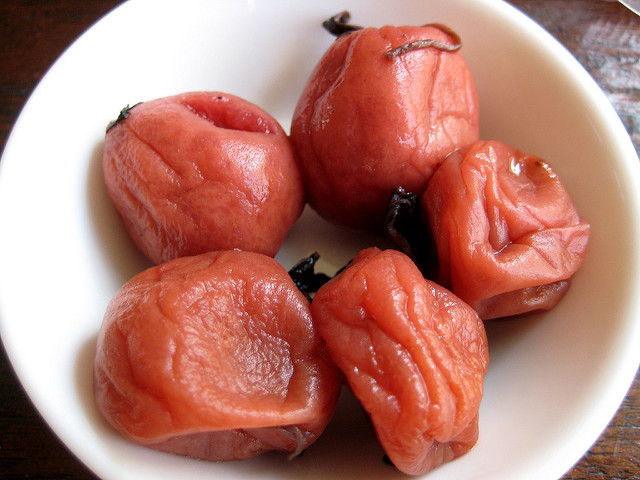
Japanese delicious pickled foods
These are the pickled foods that Japanese people simply can't stop loving.
This post may contain affiliate links. If you buy through them, we may earn a commission at no additional cost to you.
Umeboshi (Dried Plum)
This definitely has to be the first one.
Every Japanese person has eaten this at least once, this extremely sour pickled fruit.
To make it, a plum and shiso are pickled together, then dried in the sun so that the sweetness deepens and is revealed.
There are different kinds of umeboshi as well, such as konbu ume, which is plums pickled with konbu seaweed.
Nukadzuke (Vegetables Pickled in Rice-bran)
These are also pickles that Japanese people are well-acquainted with, and I've even made them before.
Placing vegetables and salt in rice-bran will cause the lactic acid to begin fermenting, so these are extremely simple to make.
Actually, since the interior of the rice-bran is extremely thick, you can continue to use it for generations.
The pickles in these families have characteristic tastes. Without exception, those families' pickles are extremely delicious.
Naradzuke (Vegetables Pickled in Sake Lees)
These are pickles that take quite a bit of work, but they are perfect companions to a drink.
If you eat it once, you'll never forget that deep, rich taste.
Kazudzuke (Fish or Vegetables Pickled in Sake Lees)
Similarly to naradzuke, these are also pickled in sake lees and mirin lees but the difference is that anything can be pickled for this, from vegetables to fruit to meat.
I love wasabe kazudzuke.
That spiciness comes with impact, and it's exceptionally compatible with sake.
It's also great with ochadzuke (rice with tea poured over it).
Matsumae Pickles
I love these too, since they go great as side dishes both to liquor and to meals.
As an versatile pickle, the manufacturing process is also Japan-specific.
Its knowledge coming from the northern provinces, so it's often made with herring roe, cuttlefish, konbu seaweed, and carrots.
Soy sauce and mirin are added for flavor and then the ingredients are fermented, and the deep taste and the viscous texture really can't be resisted.
Senmaidzuke (Sliced Pickled Radishes)
I also love these a lot. From the vegetable used in traditional Kyoto cooking, it uses thinly sliced shougoinkabura radish.
It's pickled with konbu seaweed and chili peppers, so it's delicious just on its own!
Turnips are winter vegetables, so they usually only show up on the market from November to March.
These are the representative pickles of Kyoto cooking, so they're famous nationwide.
Misodzuke (Meat, Fish, or Vegetables Preserved in Miso)
Just as the name says, it's food pickled in red miso, and anything can be used, from vegetables to fish to meat.
Originally this was done to preserve food, but now it's become the representative of Saikyou pickles.
In every area of the country the way of preparation differs, so the impression of it being a specialty product is strong.
I really love pork and kindara Saikyou pickles. I can ask for more countless times.
Fukujindzuke (Vegetables Pickled in Soy Sauce)
For me, a huge curry fan, curry rice that isn't garnished with fukujindzuke isn't curry at all. That's how obsessed I am with it.
I don't know who came up with the idea, but these are extremely magnificent pickles.
The information in this article is accurate at the time of publication.













